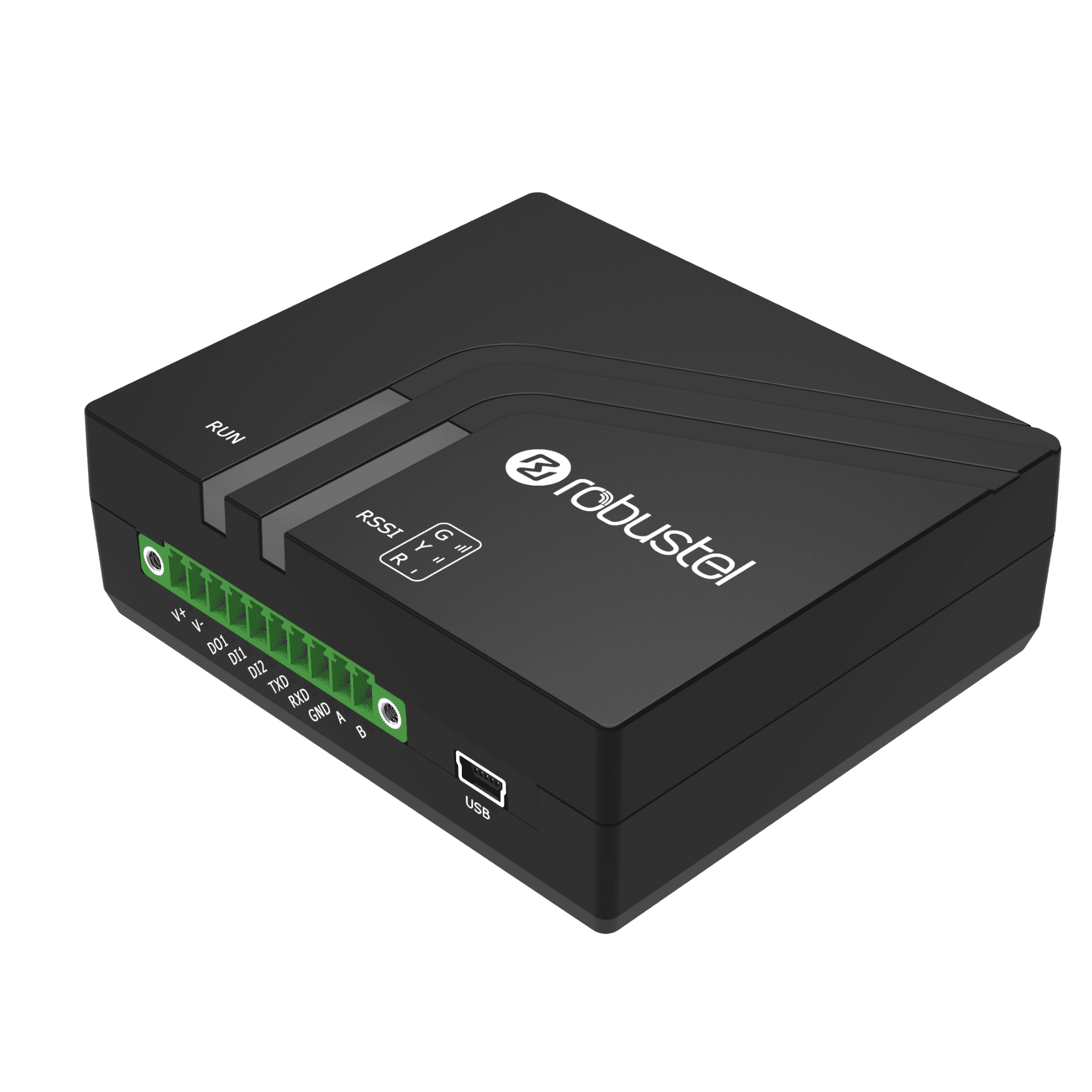Remote FTU Monitoring for Grid Power Distribution Networks
A Robustel Application Example
Application Example – Fast Facts
Industry
Energy & Utilities, Power distribution and grid operations (medium voltage feeders, FTUs, reclosers, pole-top assets)
Product(s)
M1200 Smart Modem; RCMS (RobustLink, RobustVPN)
Challenges
Feeder Terminal Units (FTUs) and other protection/automation devices out on the network hold the truth about fault direction, breaker state, and load. But many of these devices sit in roadside cabinets or on poles with no fibre, no fixed IP, and no safe way to pull data without sending a crew. Control room decisions are slowed because the field is effectively silent.
Expected Outcomes
Give each FTU a secure cellular link using a compact, low-power gateway that speaks the FTU’s native serial protocol. Let operations see status in near real time, support faster restoration, and document the sequence of events — without dispatching a technician just to read a screen.
The field knows what happened. The question is: can you see it now?
When a feeder trips, the FTU at that location often already knows what opened, which direction the fault was seen, and whether downstream has recovered. That’s the first 80% of what a control room needs to decide how to isolate and restore.
The problem is access. A lot of FTUs in service today were never designed with modern IP backhaul. They speak serial (RS-232/RS-485), sit in cabinets beside the road, and expect an engineer to physically visit, connect a handheld, pull readings, and call them in. That’s slow in good weather, and in a storm it’s even slower and less safe.
By installing a Robustel M1200 industrial cellular gateway in each FTU location, the utility gives those legacy assets a voice. The M1200 speaks directly to the FTU controller over serial, then uses cellular to get that data back to the operations centre. No trenching, no cabinet rebuild, no waiting for someone in a high-vis vest to drive out and check it.
Business Challenges
People running distribution networks deal with these realities every day:
- Critical assets aren’t in comms-friendly locations: FTUs, reclosers, and sectionalizers sit in pole-top enclosures, roadside cabinets, or small kiosks. There’s no fibre, no controlled environment, and sometimes no safe standing room — but those devices still hold the information operations needs first.
- Outage duration is visible and regulated: Interruption length and restoration time feed straight into how your network is judged. If it takes 30–40 minutes just to understand what tripped and where, that shows up in your reliability metrics and in regulatory reporting.
- Field visits carry cost and safety exposure: Asking a crew to open a live cabinet in bad weather just to read breaker position and fault direction is slow and risky. You want people dispatched for targeted switching work, not first-pass data collection.
- Legacy FTUs still run the distribution grid: Many installed FTUs communicate over RS-232 or RS-485 using Modbus or vendor serial protocols. They work, they’re stable, and they’re not going to be ripped out just to add Ethernet. You need a way to talk to them as they are.
- You’re expected to justify every step after an event: After a feeder fault, you need to prove what the FTU reported, when control saw it, and who authorised the next action. “We think it happened around 14:07” isn’t acceptable for compliance anymore.
Solution Overview
Each target FTU or feeder protection point was fitted with a Robustel M1200. The M1200 acts as a compact bridge between the legacy controller in the field and the utility’s operations environment.
- Direct link to the FTU controller: A Robustel M1200 industrial cellular gateway is installed in each target FTU location. The M1200 connects to the FTU over serial (RS-232 or RS-485), reads breaker state, fault direction, voltage/current, and alarm flags, and makes that data available without swapping the FTU or adding a custom RTU.
- Secure cellular uplink from the field asset: The M1200 uses LTE/3G to create an outbound, encrypted session from that FTU back to the utility network. That gives operations near real time visibility for assets in places where running fibre is not practical and never will be.
- Controlled access, aligned with policy: Access to the FTU data is scoped and auditable. Only authorised users/systems can poll status or retrieve alarms. Read-only access can be enforced if remote control is restricted by protection policy, so security and operations stay comfortable.
- Central management across the fleet: All deployed M1200 units appear in RCMS. Operations teams can see which FTU sites are reachable, last contact time, signal quality, data usage, and configuration state. If an FTU site goes quiet, you know before the next outage exposes that blind spot.
- Scales without cabinet rebuilds: The M1200 is compact, DIN-rail friendly, and low power, so it fits inside existing roadside and pole-mount enclosures. That means you can retrofit many feeders and districts using one repeatable pattern, not engineer a custom install per location.
Expected Customer Outcomes
What success looks like for the Operator and the Service Provider
For the utility:
- Operations sees breaker state, fault direction, and alarm conditions from an FTU in near real time instead of waiting for a crew to arrive.
- Restoration decisions happen faster and with more confidence, which helps hold outage metrics where regulators expect them.
- Fewer unnecessary field visits in unsafe conditions. Crews go out with a defined switching plan, not just to collect readings.
- A timestamped view of what happened and when, which supports internal review and external reporting.
For the systems integrator / service partner:
- You deliver a retrofit model that doesn’t require cabinet rebuilds or controller swaps.
- You maintain ongoing value because RCMS gives you (and the operator) a managed view of every deployed M1200.
- You’re providing an operational tool, not a science experiment — something control can actually use during a live event.
Featured Products
Robustel M1200 Smart Modem

RCMS Cloud Device Management

Talk to an Expert
Utilities are expected to restore supply quickly, justify every action, and keep field crews safe — often with assets that were never designed to talk.
Let’s discuss how a low-power cellular gateway inside each FTU can give you immediate visibility, faster switching decisions, and a clearer record of events without rebuilding the entire feeder.
